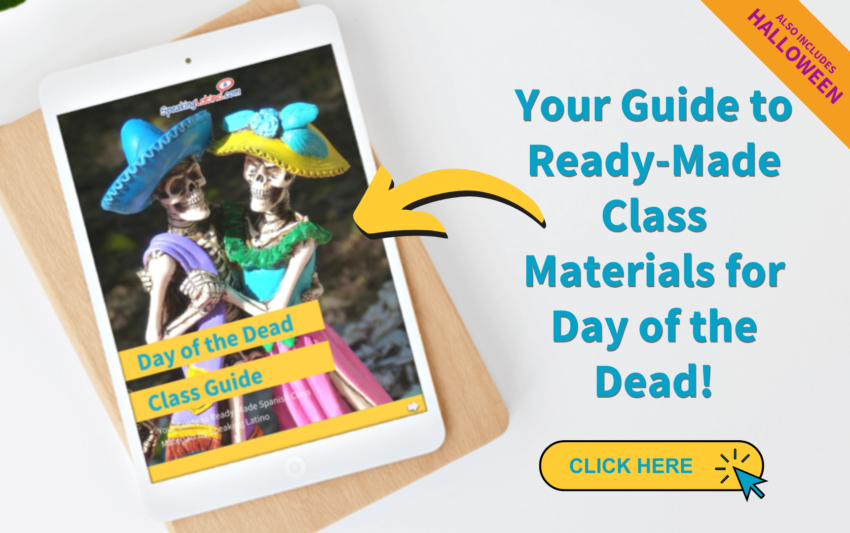While Day of the Dead is celebrated by Catholics around the world, this date has become a national symbol in Mexico.
This guide helps middle to high school Spanish teachers discover the activities and materials to use in their classes. The guide also includes activities to teach Halloween Spanish vocabulary.
Having a guide with Spanish class activities for Day of the Dead and Halloween is important for teachers because it helps them to teach their students about these special holidays in a fun and interactive way. It also allows students to learn more about the culture and traditions associated with each holiday, while giving them language practice as well.
The activities can range from reading about the altar and coloring skulls, to writing tasks or playing games. They provide teachers with engaging material that will help keep their students interested and engaged in their lessons.
Click here to open this class guide.
Inside you will find:
- Spanish Lesson Plan for Day of the Dead
- Reading comprehension activity about the altar
- Day of the Dead Spanish vocabulary activities
- Halloween Spanish vocabulary activities
Check out our list of Spanish Class Activities.
